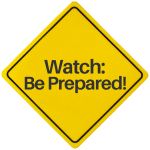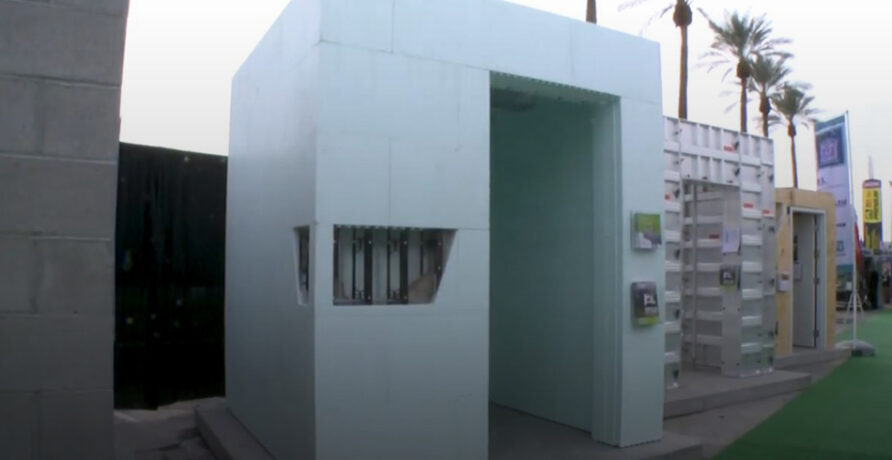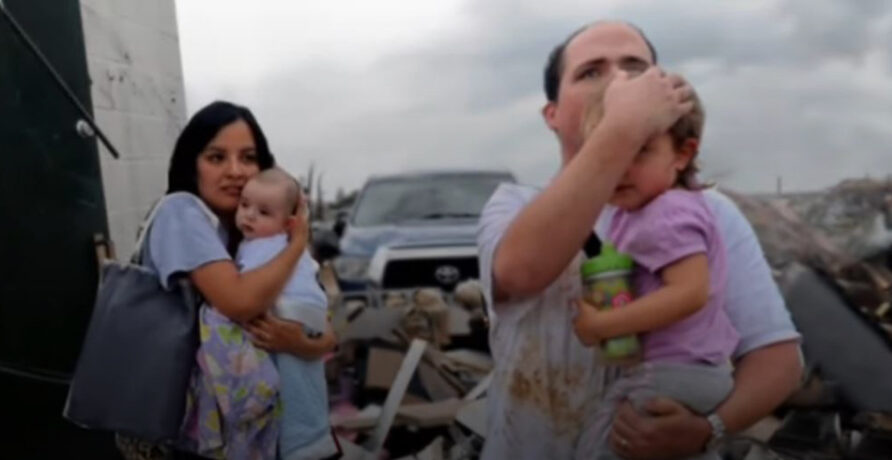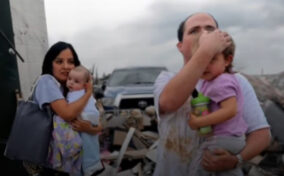Tornadoes aren’t like hurricanes that are born over open waters and can take days to reach land. They are the most sudden, unpredictable, and violent storms on earth.
See how to determine your risk, prepare your family, learn about your building code, and identify ways to strengthen your home against tornadoes.
Tornadoes can occur with little warning, so it’s important to prepare ahead of time. Start by identifying your safe space, such as a windowless interior room on the lowest floor of your home or a different sturdy building. Learn the difference between a tornado watch and a tornado warning.
Strengthen your home to withstand high-wind events, and consider installing a tornado safe room or certified shelter. Then, stock your disaster supply kit. Create a disaster plan to protect you, your family, and your home.
To prepare your business or organization for severe wind or a tornado, download the free Ready Business Tornado Toolkit to kickstart your planning.
Act quickly when a tornado warning is issued and take shelter in a certified shelter, FEMA safe room, or your safe space, such as a windowless interior room on the lowest floor of a sturdy building. Prevent head injuries by wearing a bicycle or motorcycle helmet. Keep blankets and pillows handy to protect against broken glass or windborne debris.
Monitor the path and status of the tornado throughout the event. Keep doors and windows closed and locked for the entirety of the storm.
Tornadoes can cause a lot of destruction in little time and leave hazardous conditions. Stay away from power lines and puddles when exiting your shelter, and don’t attempt to enter heavily damaged buildings.
Take photos of property damage and file a claim with your insurance company. Plan to repair and rebuild resiliently to prevent damage from future tornadoes.
Please enter a more specific address.

A tornado watch means the weather conditions for tornadoes are favorable during the next few hours. A watch usually covers a large area of several cities, counties, and sometimes even multiple states.

A tornado warning is issued when a tornado has been sighted or indicated by weather radar. A warning means that it is time to take action because there is imminent danger to life and property.
The Federal Alliance for Safe Homes (FLASH) — a 501(c)(3) nonprofit organization — is the leading consumer advocate for strengthening homes and safeguarding families from natural and manmade disasters.
The Playbook provides proven strategies for all leaders who wish to drive resilience.
This annual conference brings together the nation’s leading voices in disaster safety.
Inspect2Protect will help you understand the building code where you live.
Did you know that you can have near-absolute protection from tornadoes in a FEMA safe room or an ICC 500 certified storm shelter?


Insulating Concrete Form Safe Rooms


A Family's Story of Survival


Which Tornado Safe Room is Right for You?


Prefabricated Safe Rooms: Weathering the Extremes
Tornadoes are caused by powerful thunderstorms that form when warm, moist air meets cool, dry air. The clash of these two air masses creates instability in the atmosphere, which can lead to the formation of strong updrafts and downdrafts within the storm.
As the updrafts and downdrafts intensify, they can start to rotate around a vertical axis, forming a mesocyclone. When this mesocyclone descends from the cloud base and reaches the ground, it becomes a tornado.
Tornado season refers to the time of year when tornadoes are most likely to occur, and it varies depending on the region. Generally, tornado season runs from late winter to early summer, with the peak months being March through June. However, tornadoes can occur at any time of year and can strike at any time of day or night.
It is essential to monitor weather conditions by having a NOAA weather radio and smartphone apps to stay safe regardless of the time of year or your location.
A tornado path is an area on the ground that is affected by a tornado as it moves along its track. When a tornado touches down, it can cause extensive damage to anything in its path, including buildings, vehicles, trees, and other structures. The path of a tornado can vary in width and length, depending on the size and strength of the tornado.
The path of a tornado is typically determined by analyzing the damage caused by the storm. This is done by surveying the affected area and looking for patterns of destruction, such as the direction in which trees or buildings were knocked down or the degree of damage to different types of structures. Based on this analysis, meteorologists can estimate the width and length of the tornado path, as well as the strength of the storm.
Tornado paths can be extremely destructive, and it is important to take precautions if you live in an area that is prone to tornadoes. The National Weather Service issues tornado warnings when a tornado has been sighted or is indicated by radar. It is important to follow these warnings and seek shelter immediately if you are in the path of a tornado.